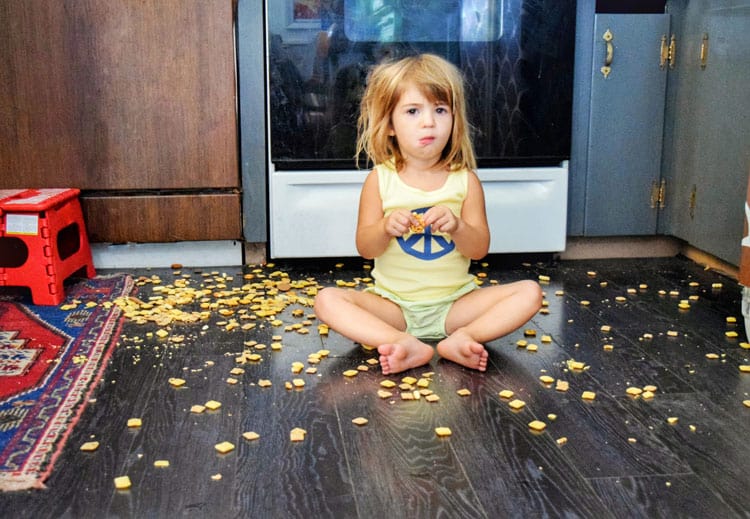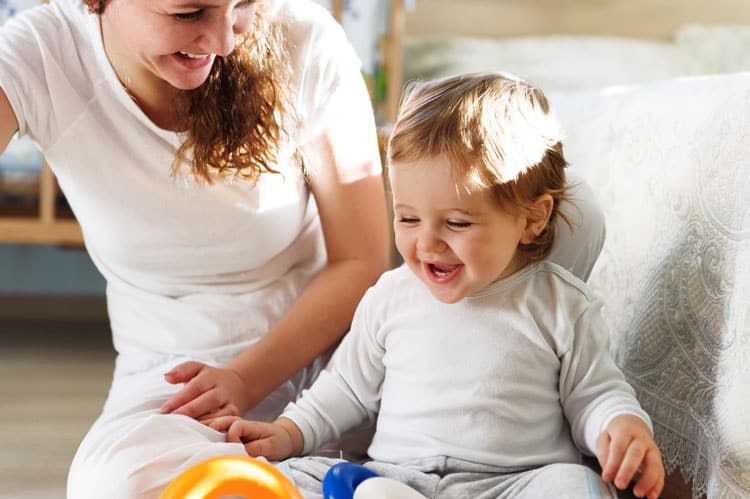Positive parenting is the choice to discipline and parent your child(ren) with a constructive, encouraging, and loving attitude. Positive parenting solutions involve strategies that combine discipline with genuine care. With positive parenting, you are able to show your child(ren) that you love them while teaching them what is to be expected.
1. Get to the root of negative behavior

The most important step is to figure out the cause of your child’s negative behavior. If your child is upset or lashing out, why are they displaying that type of behavior? Is it because they are tired? Hungry? Jealous? Lonely? There can be many causes behind negative behavior so jumping right to conclusions isn’t the best tactic. Instead, think of the whole child and what may be affecting them. Then, decide what positive parenting solution would work best in that moment.
2. Redirect and use alternative language

Redirecting your child when they’re about to do something they shouldn’t be doing is a good way to refocus them without immediately disciplining them. This positive parenting solution works great with younger children and babies as they learn what’s okay and what’s not.
Rather than overuse the word “NO!” use alternative language. Why? Saying “NO!” to everything doesn’t explain to your child why you don’t want them to do what they’re doing (or about to do). The word typically has a harsh tone to it whereas alternative language should not.
Examples of alternative language include:
- “Hey, that’s not a good idea because…”
- “Before you do that…”
- “Let’s make sure we do that safely…”
- “Hold on before you do that…”
- “What are you trying to do?”
- “Remember why we’re not supposed to do that?”
- “Is that something you’re allowed to do?”
3. Encourage good behavior

Be excited when your child displays behavior that you are proud of. Exclamations such as “Great job!” and “You did it!” are rewarding phrases that children love to hear. For babies and toddlers, clapping is also a way to show them you are proud and excited. Positive parenting solutions include encouraging the behavior you want to see.
Another way to encourage good behavior is to help set them up for success. For example, allowing enough time for your child to get ready in the morning helps them succeed; rather than waking them up late and making them rush which sets them up for failure. Another example is giving them a 5-minute warning before leaving the park (or any other place they want to stay ‘forever’). Letting them know in advance helps encourage good behavior rather than telling them it’s time to leave when they’re in the middle of playing with friends.
Related articles:
- Strategies for Effectively Disciplining Toddlers
- How to Help Your Child With Back-to-School Anxiety
- How To Be A Good Parent
- Is Your Toddler Getting Enough Physical Activity?
- Parenting Failures & How to Avoid Them
4. Listen well and be patient with your positive parenting solutions

Positive parenting solutions aren’t all about what you say and what you don’t say but it has a lot to do with listening too. Dropping down to your child’s level and patiently listening to them as they talk to you or explain something to you is a powerful positive parenting solution. You may find that a disgruntled or angry child seems much calmer after you listen to what they need to say. Whereas, cutting them off may amplify their emotions. Children feel heard, loved, and supported when you listen well and show that you care—just like anyone else would!
5. Be realistic with expectations

Remember that your child is still…well, a child. Young children are learning basic things such as what emotions are, how to express them, how to follow the rules, etc. Some expectations may need to be adjusted depending on your child’s age and abilities. For example, it’s normal for a 1-year-old to not be able to sit through a 2-hour movie while remaining quiet because it’s not realistic for their age. When it comes to expectations, it’s not wrong to set them high, but coupling your expectations with reality is an even better positive parenting solution.
6. Replace demands with kind commands

Kind commands are a way to instruct your child(ren) without always demanding them to do something. For example, replacing “Take your bowl to the kitchen” with “Good job eating your dinner, can you please take your bowl to the kitchen?” is a more personable way to talk to your child. With that being said, a firm demand may occasionally be necessary. Using kind commands, in a kind tone, most often helps your child(ren) see you as a warm and safe parent and not just as a “ruler” in the home.
7. Help them understand

As children develop and learn to talk, they are learning and hearing SO many new words. Keep this in mind when you speak to them and don’t assume they know what you’re talking about. For example, asking, “Why didn’t you listen?” can be a confusing question to little ones because they’re not sure how to answer when they’re still trying to figure out what emotions are. Instead, saying, “When mommy tells you to do something, I need you to listen and do it, okay?” can help them better understand where you’re coming from.
8. Be aware of your own emotions, words, and behaviors

Children pick up on their parent’s personalities, so it’s good to be aware of your own ways and behaviors. According to an article from Psychology In Action, babies (even as young as 5-months-old) are “sensitive to changes in emotional tones.” If you are constantly yelling, frantic, or emotional, your child will pick up on that and they’re more likely to replicate the behavior. On the other hand, if you’re calm, a good listener, and gentle, you’re encouraging your child to act in a similar way.
Positive parenting solutions can turn a disgruntled and turbulent home life into a more understanding and encouraging one. Children quickly pick up on words, tones, actions, and body language, so make sure they’re picking up on the best of you! What positive parenting solutions work best for your family?

Morgan French is a wife, mom of two, writer & editor. After traveling for 3 years with her family, she now lives back in her hometown of Dayton, OH. She makes frequent stops for coffee, enjoys the outdoors, and loves board games.



Great article! Thanks for sharing :)
Great article. I especially like the point to get down to the child’s eye level and really listen to what they have to say. I do this with my son and seems to help calm him down quickly. Plus Im at a perfect level for hugs :)